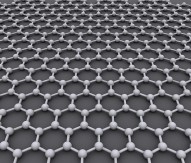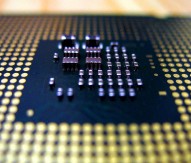
Graphene Flagship reviews potential for graphene-organic composites
The potential for graphene-organic composite materials in electronics has been reviewed by chemists from Europe’s Graphene Flagship, who have shown how organic semiconductors can be used to better process graphene, and to tune its properties for particular applications.
Andrea Schlierf, Paolo Samorì and Vincenzo Palermo from the Graphene Flagship – an international consortium of academic and industrial partners, part-funded by the European Commission, which focuses on the development of graphene and related 2D materials – reviewed the scalable processing and functionalisation of graphene
The scientists explored a number of commercial polymers, the mechanical and electrical properties of which could be improved with the addition of graphene. They also considered graphene as a substrate for biomedical applications, and the use of organic semiconductors to open up an electronic band gap in graphene.
The absence of a band gap in the pure form of this highly conductive material is a major issue hindering its exploitation in electronics.
Experimental results show that the nucleation, orientation and packing of organic semiconductors on graphene are quite different from those grown on conventional substrates such as silicon and graphite. Adding chemical side chains to the backbone of the organic molecules can also expose functionalities that work in synergy with or opposition to the core interaction between the adsorbed molecules and graphene, leading to more complex self-assembly pathways.
However, soluble graphene-organic hybrid systems have clear advantages over graphene produced by chemical vapour deposition or epitaxial growth with regard to functionalisation and cost. This is due to the fact that graphene-organic suspensions can be processed with large-area deposition techniques such as ink-jet printing, with the graphene produced by liquid-phase exfoliation in an organic solvent.
The adsorption of organic molecules on graphene can have a significant effect on the electronic properties of the latter. The influence of this material doping is confirmed by spectroscopic measurements, and includes G-band splitting in Raman spectra.
Adsorption of organic semiconductors can also confer a magnetic function on graphene, complementing its electronic, mechanical and optical properties. This could lead to the application of graphene-organic hybrid materials in spintronics, with magnetic functionalities that alter the spin polarisation of electric currents flowing in graphene.
In addition to spintronics, the potential for graphene in electronics rests largely on its application in integrated circuits, and for example in the components known as field-effect transistors (FETs).
In its pristine form especially, however, the high charge carrier mobility is offset by a very poor on-off current switching ratio. Doping graphene with other materials can ameliorate this to some degree, while graphene could also be incorporated into organic FETs, resulting in increased electron mobilities, and switching ratios comparable with or better than those observed in organic FETs without graphene.
Palermo, who heads the functional organic materials unit at the Institute for Organic Synthesis and Photoreactivity of the Italian National Research Council in Bologna, said: “A major advantage of graphene over silicon is that is based on carbon, which forms the basis of all organic materials. This affinity of graphene with organic compounds allows for a seamless integration of graphene into composite materials for flexible electronics, sensing and biomedical applications. Graphene can strongly interact with and tune the morphology of most organic molecules, and it does so in a more controlled way than is the case with other materials such as silicon or metals.”
As Palermo and his co-authors state in their conclusion, the possibility of combining carbon-based materials with very different properties should allow for the integration of high-speed electronics, organic electronics and composite materials science.
The review has been published in the Journal of Materials Chemistry C.




